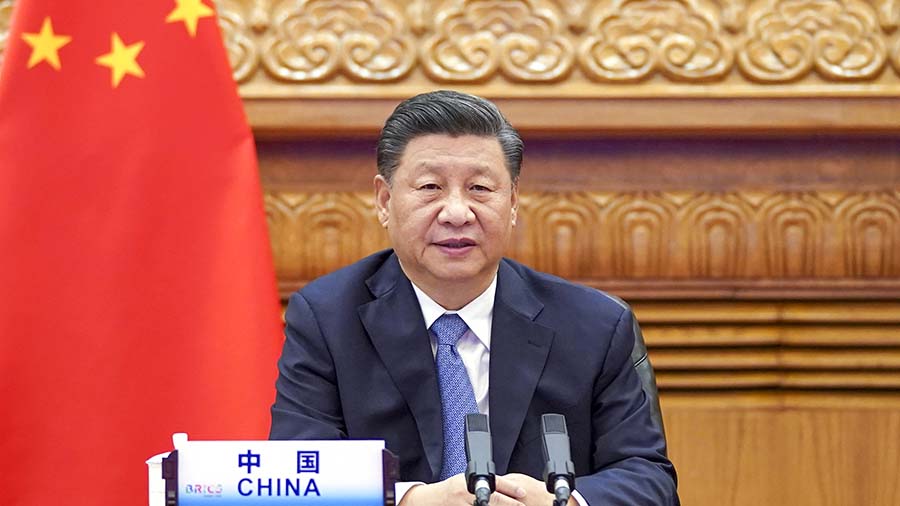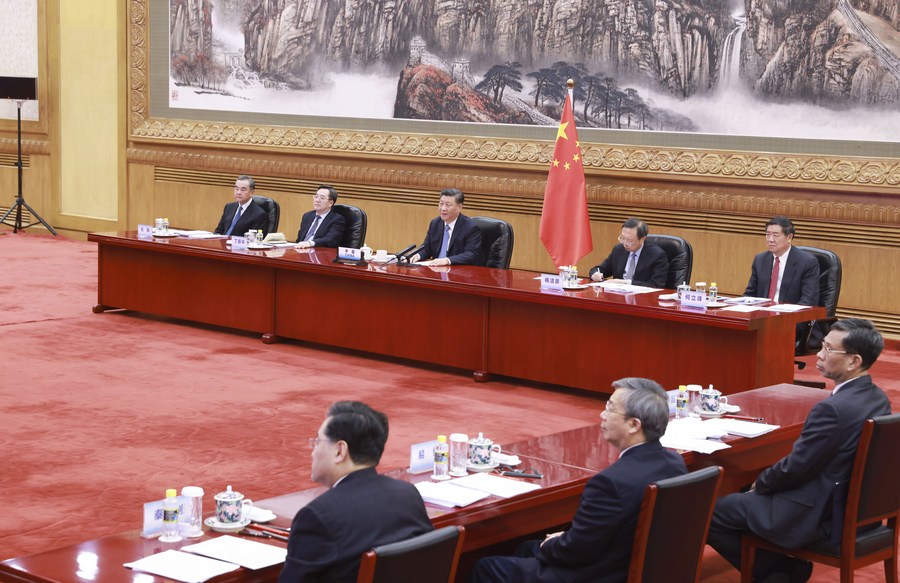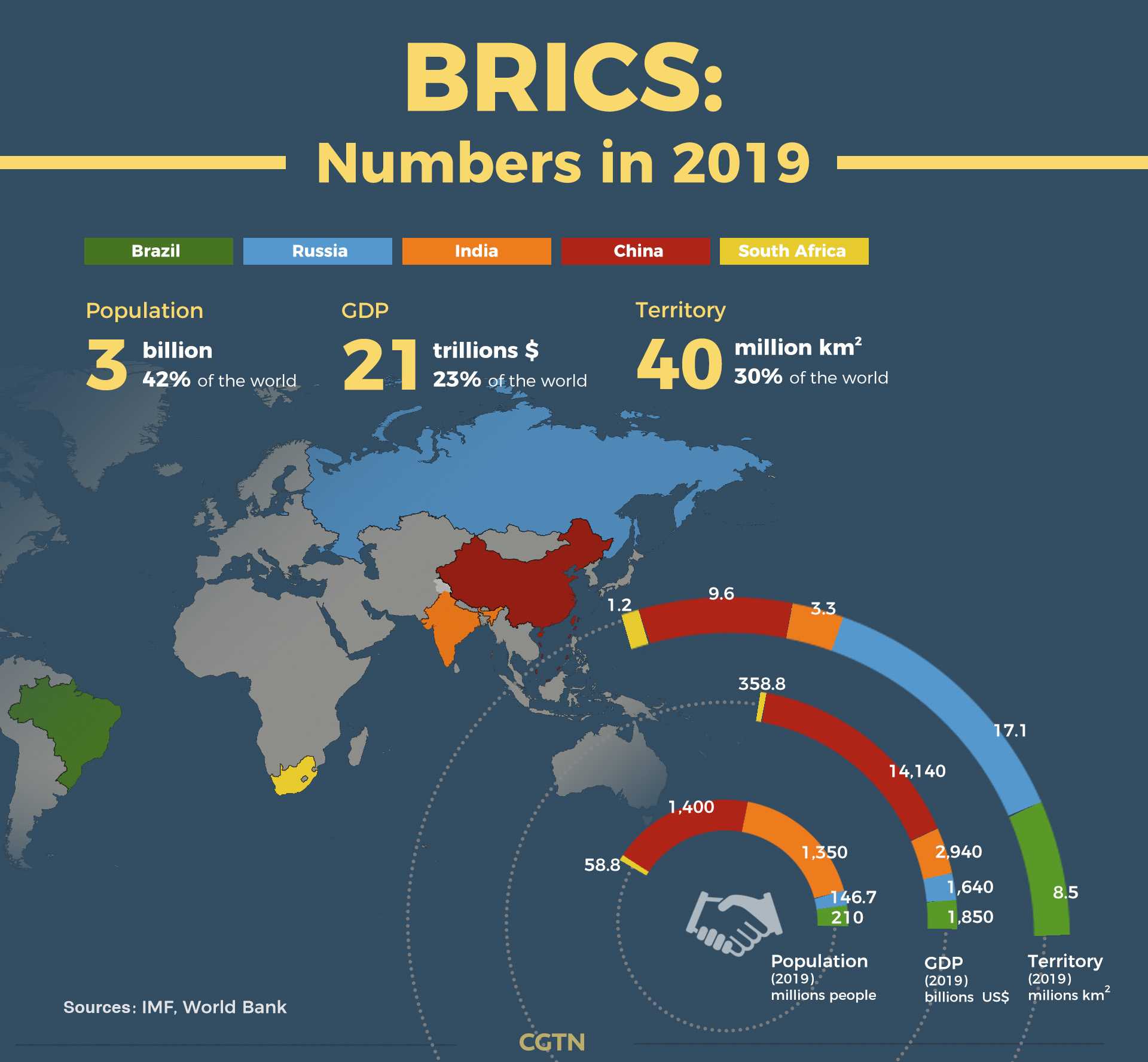02:35

In a world rocked by the COVID-19 pandemic and escalating tensions with the United States, China has got itself well prepared — with a new economic model called "dual circulation" that is expected to shape the country's blueprint for the next five years.
The new pattern, "dual circulation", also known as "double development dynamic," refers to the two economic circles: trade at home and abroad, but this time with greater emphasis on domestic market. Hyping discussions immediately prompt suggestions that the Chinese economy would "turn inward," as it is argued that focusing on trade at home means "closing doors" to the outside world.
Read more:
CGTN Opinion: Guide to China's dual circulation economy
What dual circulation means for China and Chinese workers
Yet to Beijing, opening its door wide seems like a long-term plan that it's not looking to give up. On Tuesday, Chinese President Xi Jinping told the 12th BRICS summit that China will more "actively integrate into the global market". Instead of shutting its door to opening-up, China will embrace the world with more open arms, President Xi noted.
BRICS is the acronym for an emerging-market bloc that groups Brazil, Russia, India, China and South Africa. Tuesday's meeting was hosted by Russia, which holds the rotating BRICS presidency this year.
China will redouble its efforts to expand domestic demand, deepen reform in all aspects, and promote innovation in science and technology to add impetus to its economic growth, he added.
"The strengthening of internal circulation has no contradiction with China's policy of opening-up," commented Prof. Gao Liankui of EU Business School in an opinion piece for the Global Times. "The new development pattern ... was rolled out based on the objective development of the Chinese economy, which has seen industrial upgrading and an expansion of the domestic market."

Chinese President Xi Jinping attends the 12th BRICS summit via video link in Beijing, capital of China, November 17, 2020. /Xinhua
Chinese President Xi Jinping attends the 12th BRICS summit via video link in Beijing, capital of China, November 17, 2020. /Xinhua
"Along with technological development, an economic entity will see its comparative advantages change, leading to a certain degree of import substitution. It's not China's unique path," Prof. Gao said in the piece.
Also at the BRICS meeting, President Xi highlighted the need for international solidarity in the fight against the coronavirus. "We need to overcome differences and prejudice with unity and rationality and forge the greatest synergy in the battle against the virus," he said.
China's carbon neutrality commitment
Also at the BRICS meeting, Xi doubled down on the country's commitment to achieve carbon neutrality before 2060. That goal, according to experts, would require Beijing to achieve near-zero emissions by 2050.
China will scale up its nationally determined contributions and strive to peak carbon dioxide emissions by 2030, he vowed, "You can count on China to keep its promise."

Power-generating windmill turbines in Weining County, southwest China's Guizhou Province, April 26, 2020. /Xinhua
Power-generating windmill turbines in Weining County, southwest China's Guizhou Province, April 26, 2020. /Xinhua
"To achieve carbon neutrality by 2060 requires a huge transformation in all aspects of the social, economic, energy, and technological systems," He Jiankun, vice chairperson of the National Committee of Experts on Climate Change, told Xinhua, meaning new energy and renewable energy will be topped as the mainstay.
Official data shows that China's emissions of carbon dioxide in 2018 were 45.8 percent lower than that of 2005, which means that the country had met its emission reduction target two years ahead of schedule.
In addition, the government has sorted out ways to promote "green development". China has promoted carbon emissions trading in seven of its provinces and cities — including Beijing and Shanghai — since 2011 to explore market-based mechanisms to control greenhouse gas emissions.
China is ready to fulfill its due international responsibilities commensurate with its level of development, Xi said at the Tuesday meeting.
Building BRICS partnership on new industrial revolution
With respect to the BRICS partnership, Xi pointed out that China is willing to work with other BRICS members to accelerate building a BRICS partnership on the new industrial revolution.
Specifically, China will set up an innovation center for such a partnership in the city of Xiamen, southeast China's Fujian Province, the Chinese president announced at the meeting. The innovation center will facilitate cooperation in fields including policy coordination, personnel training and project development, according to President Xi.
Established in 2009, the BRICS group was set up to establish an equitable, democratic and multi-polar world order, while helping to shape a stable, predictable and more diversified international monetary system.

"BRICS serves as an antidote to the G7 and other U.S.-dominated institutions," pointed out London based political commentator Freddie Reidy. "This (its establishment) was interpreted as the need to find a new global reserve currency, consequently leading to an immediate slide in value of the dollar, demonstrating the considerable influence of the group."
President Xi also called on BRICS countries to hold the banner of multilateralism high, safeguard the purposes and principles of the UN Charter and the international order underpinned by international law.
People's welfare should always be kept close to heart, he stressed in his speech, also urging the bloc to pursue the vision of a community with a shared future for mankind.
At present, the world is caught between the most serious pandemic in the past century and momentous changes never seen in the last one hundred years, Xi said, referring to the COVID-19 pandemic that has plunged the world into the worst recession since the Great Depression in the 1930s.
"Despite all this, we remain convinced that the theme of our times — peace and development — has not changed, and that the trend toward multipolarity and economic globalization cannot be turned around," he said.

